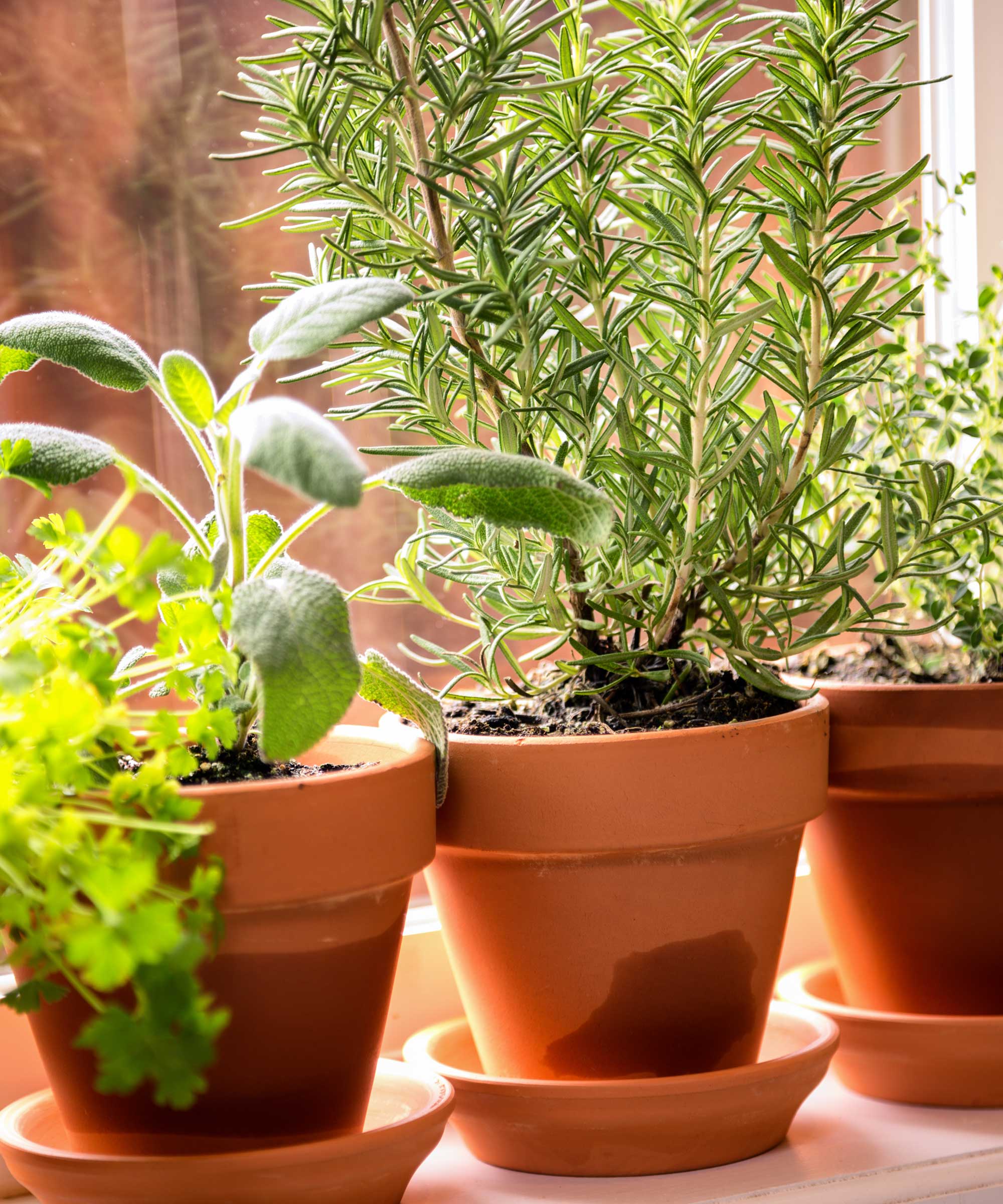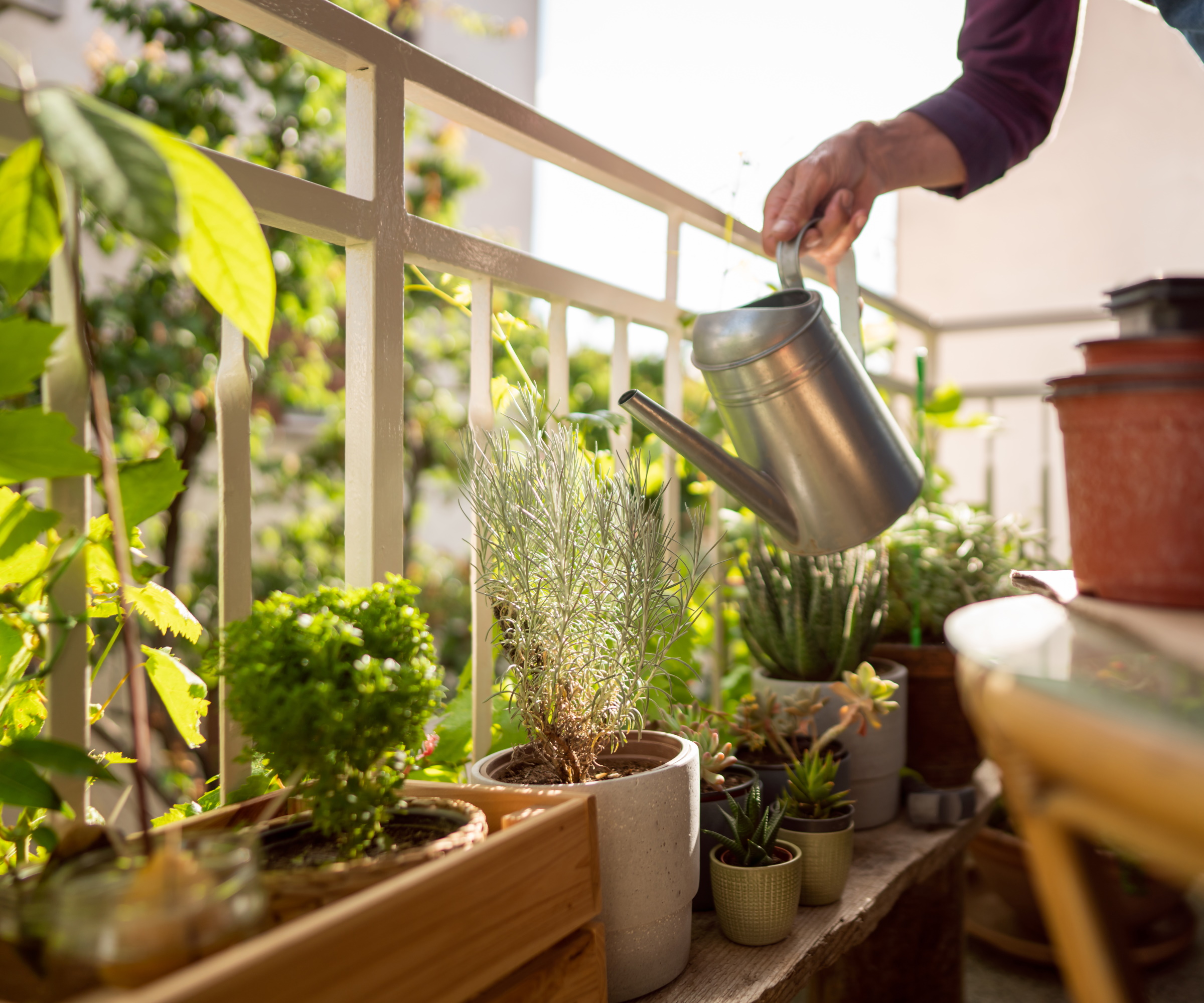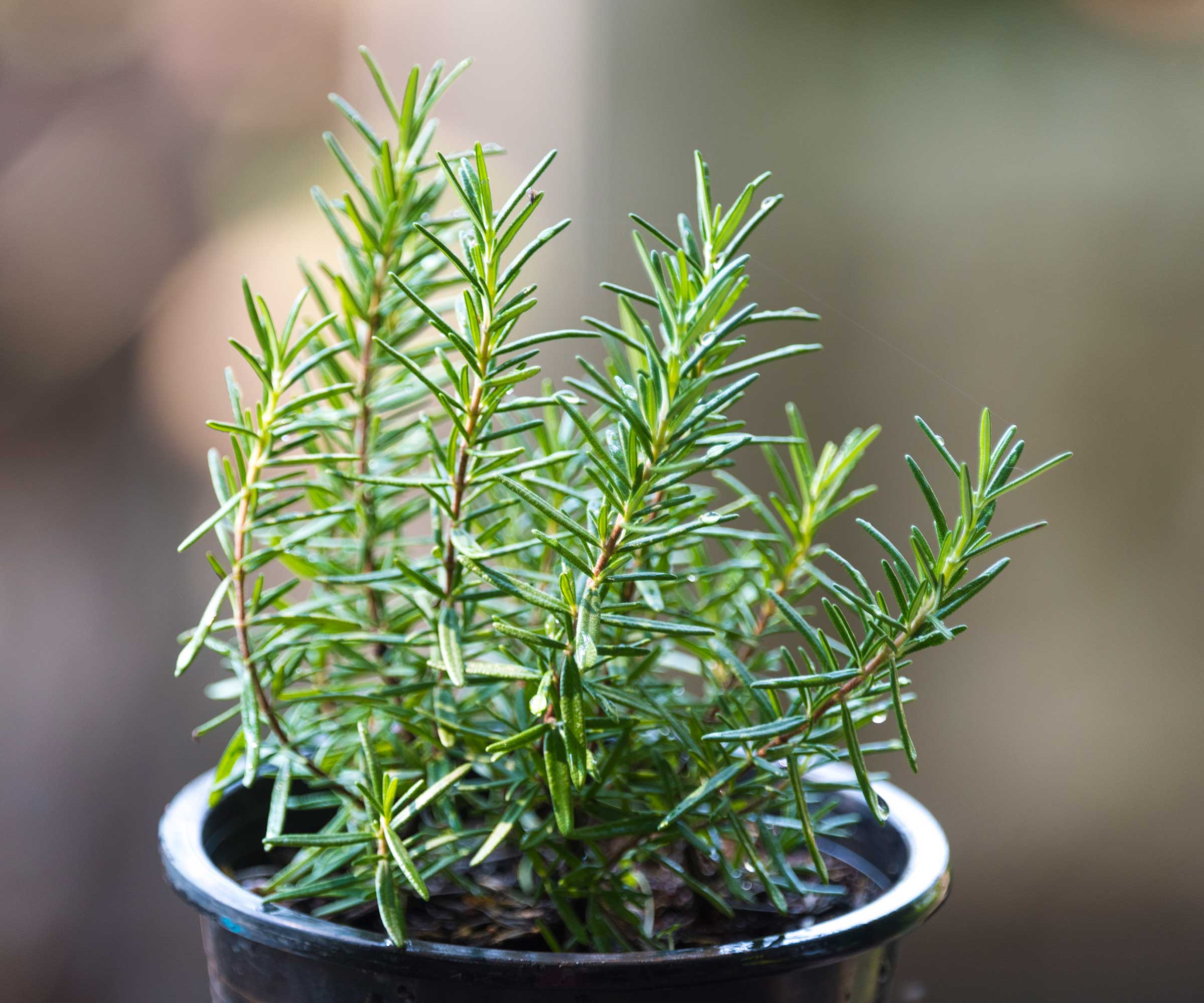
As we head into the coldest months, my mind is focused on getting my yard ready for winter to ensure all my plants are prepared for frosty temperatures. One of the biggest jobs is overwintering plants, including bringing some indoors, like rosemary.
You can grow rosemary in a range of regions, though it thrives best across US hardiness zones 8 to zone 11. It's fairly frost-tolerant, but not completely. In the coldest zones, rosemary is less likely to survive in an outdoor setting and is best overwintered indoors until spring. In milder climates, you can get away with leaving rosemary outdoors with some frost protection.
Either way, you should take steps to overwinter rosemary in fall before the first frost. To help you do it correctly, I've outlined the three easy steps I follow to bring my rosemary indoors for winter, plus tips on protecting it from frost in an outdoor setting.

3 Steps to Overwinter Rosemary Indoors
You should consider overwintering rosemary indoors if you live in US hardiness zone 7 or below. This is most convenient when growing rosemary in pots. However, it is possible to pot up planted out rosemary to bring inside.
1. Water Your Rosemary Plant Well

The first step to overwintering rosemary indoors is watering the plant well. This helps to prepare it for the change of location.
I tend to give my rosemary a deep watering a couple of days before moving it indoors. This provides time for the roots to soak up moisture, but also dry out just enough so handling the roots and soil isn't too tricky.
Of course, you should make sure you're not overwatering your rosemary. I always use this soil moisture meter from Amazon to identify if it's time to water my plants.
This is also a good time to do some light rosemary pruning in preparation for overwintering rosemary.
Use these pruning snips from Amazon to remove any leggy and damaged growth. This will set your rosemary up for new growth indoors.
2. Pot Up Your Rosemary Plant

If you plant rosemary in a border, it can gradually become a big shrub, sometimes reaching up to four feet in height.
A mature rosemary shrub is much more difficult to pot up to overwinter indoors. At this stage, you should turn to techniques to protect plants from frost. In mild climates, you may even find your mature rosemary is a herb you don't need to winterize.
However, smaller ground-planted rosemary plants can be potted up to overwinter. When doing so, use tools like this garden trowel from Amazon and ensure as much of the root ball as possible remains intact.
When potting it up, use a well-draining soil type. You can even purchase a specific herb potting mix from Amazon.
3. Place Your Rosemary In a Bright Spot

To overwinter rosemary successfully, it needs a location with lots of light. These herbs are native to the Mediterranean after all.
I find my rosemary plant is happiest when placed on my sunniest, south-facing windowsill. In fact, this is where I grow other drought-tolerant herbs, so it makes it easy to incorporate rosemary into my indoor herb garden for winter.
You can also place your rosemary in a well-lit conservatory or a greenhouse.
Ideally, your rosemary plant should get six to eight hours of sunlight daily. If you're struggling to provide this, use a grow light for houseplants. This grow light from Amazon has a timer function.
At the same time, your rosemary should be kept at a temperature between 55-65°F, which will keep it productive. You can use a heat mat (from Amazon) if you need to boost warmth levels.
Don't forget to also check your rosemary for any pests before bringing it indoors, so they don't spread to other herbs or houseplants.
Tips For Overwintering Rosemary Outdoors

You may consider leaving rosemary outdoors in winter if you live in US hardiness zones 8 or above, or if your rosemary is a substantial shrub too tricky to lift and move indoors.
In this case, it's important to put some frost protection in place to help your rosemary get through the harshest months.
This includes pruning to remove leggy and damaged growth, mulching at the base of the plant, and even using a frost cover (from Amazon) over it.
For potted rosemary plants you are keeping outdoors, consider wrapping the containers with burlap (from Amazon) for extra root insulation.
You should also consider moving potted rosemary to a more protected location, such as against a wall or under a shelter like a pergola.
FAQs
When Can I Move Rosemary Outdoors?
If you overwintered rosemary indoors, you can move it back outdoors in spring after the last frost. When doing so, you should expose your rosemary plant to the colder outdoor conditions gradually to acclimatize it and ensure a smooth transition.
With your rosemary settled indoors for winter, you can follow the same guidance as growing rosemary indoors. Bear in mind it will dry out more slowly during the colder months, and watering should be adjusted accordingly. Likewise, you should maintain good air circulation to keep it pest and disease-free.
Shop Indoor Herb Garden Accessories:
Use these herb scissors to harvest herbs with clean cuts. The gorgeous green color makes it attractive decor for your herb garden in between use.







